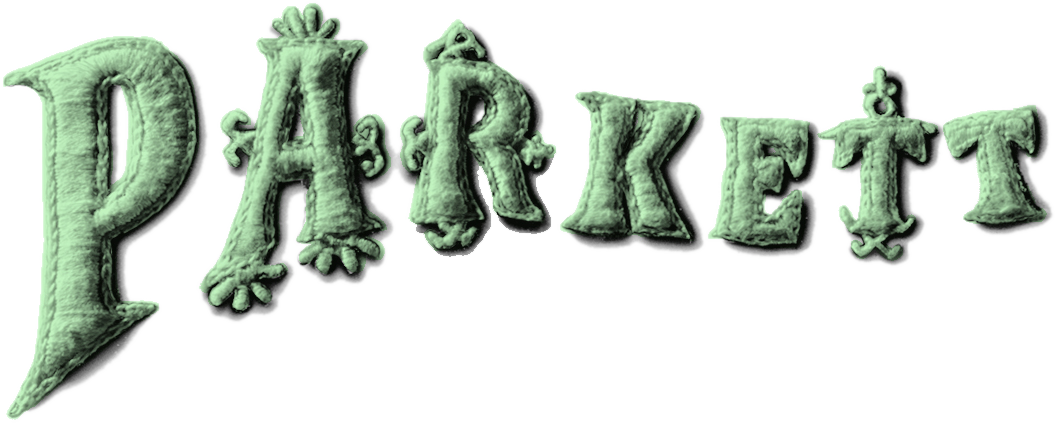 Image 1 of
Image 1 of


Parkett Vol. 93 - 2013 | Valentin Carron, Frances Stark, Adrian Villar Rojas, Danh Vo
Valentin Carron
Read a selected text
View edition
Frances Stark
Read a selected text
View edition
Adrian Villar Rojas
Read a selected text
View edition
Danh Vo
Read a selected text
View edition
Insert Tala Madani
Spine Francis Baudevin
Cumulus
On artists' projects in Stromboli, Italy by Angela Vettese
On Rembrandt by Michael Glasmeier
Miscellaneous
Station to Station by Doug Aitkin & Tim Griffin
U.S. & Canada
Please place your order through our distributor D.A.P. here.
Valentin Carron
Read a selected text
View edition
Frances Stark
Read a selected text
View edition
Adrian Villar Rojas
Read a selected text
View edition
Danh Vo
Read a selected text
View edition
Insert Tala Madani
Spine Francis Baudevin
Cumulus
On artists' projects in Stromboli, Italy by Angela Vettese
On Rembrandt by Michael Glasmeier
Miscellaneous
Station to Station by Doug Aitkin & Tim Griffin
U.S. & Canada
Please place your order through our distributor D.A.P. here.
Valentin Carron
Read a selected text
View edition
Frances Stark
Read a selected text
View edition
Adrian Villar Rojas
Read a selected text
View edition
Danh Vo
Read a selected text
View edition
Insert Tala Madani
Spine Francis Baudevin
Cumulus
On artists' projects in Stromboli, Italy by Angela Vettese
On Rembrandt by Michael Glasmeier
Miscellaneous
Station to Station by Doug Aitkin & Tim Griffin
U.S. & Canada
Please place your order through our distributor D.A.P. here.
Browse Selected Texts and more on the Collaboration Artists
Artist Insert
Editorial
In this issue of Parkett, grandiosity is cut down to size while intimacy looms large. Valentin Carron, Frances Stark, Adrián Villar Rojas, and Danh Vo consider the disproportionate influence of the powerful and tip the scales in the opposite direction. On the cover, a boy smears red handprints down a white wall. He is one of the many young relatives whom Danh Vo invited to join him at Villa Medici, in Rome, as he prepared his exhibition at the start of 2013. The children’s colorful graffiti provided the backdrop for Vo’s work, a concrete reflection of the way that familial bonds pulse beneath the surface of his coolly conceptual installations. Objects bought at auction that once belonged to Robert S. McNamara, US secretary of defense under presidents John F . Kennedy and Lyndon B . Johnson and a primary architect of the war in Vietnam, are presented alongside calligraphy by Vo’s father, who helped his family to escape the country following the fall of Saigon. As Michael Newman observes, “The pen is merely a pen, but what orders it must have signed! These chairs were sat on by McNamara—and perhaps Kennedy and Johnson!” But Vo has stripped the chair, its insides now metamorphosed into a dehierarchized antiform.
In the work of Frances Stark, personal experience is given prominence, from diaristic reflections to sexual encounters on the Internet. The scale of her work, however, is anything but intimate, as the desktop expands to fill the room, and even a theater. Monika Szewczyk argues that Stark returns to the epic—“but a homemade epic, an almost-epic, virtually opera buffa”—and to the Gesamtkunstwerk , “as her work synthesizes poetry, music, pictorial art.”
Adrián Villar Rojas translates science-fiction fantasies of dystopian futures into monumental sculptures. However, unlike ancient Egyptian obelisks or Hellenic altars, these architectural markers cannot be appropriated by later conquerors and given new meaning. Villar Rojas’s material of choice is unfired clay, and thus his sculptures begin to crumble even as he finishes them. “A lost civilization can be reclaimed by the next one,” writes Doryun Chong, but Villar Rojas’s monuments will “vanish with no regrets.”
Valentin Carron remakes monuments as well, finding inspiration in the modernist public art of his native Switzerland. As he enlarges and shrinks them, substituting materials, Carron foregrounds how we interact with the sculptures that surround us; once avant-garde, they now form a staid backdrop. SWEET REVOLUTION (2002) , a “stack of three shapes” accented by bottles of poppers, leads Lionel Bovier to imagine a group of skateboarders hanging out in a provincial town on a Saturday night: “They probably no longer even notice this monument in the middle of the small square where they are in the habit of gathering.”
For the Insert, Tala Madani has miniaturized the loutish men who people much of her work—yet their mischief-making remains undiminished.
Table of Content
Station to Station by Doug Aitken & Tim Griffin
Valentin Carron
The Pavillion of Contrasts by Giovanni Carmine
Carrion: Valentin Carron’s Restoration Act by David Breslin
On the Plastic Situations by Valentin Carron by Lionel Bovier
Frances Stark
Text after Text by Alex Kitnick
Computerliebe by Dieter Roelstrate & Monika Szewczyk
Addicted to Fantasy: Frances Stark’s Put a Song in Your Thing by Christoph Gurk
Andrián Villar Rojas
A Whaling in the Woods by D. Graham Burnett
A Million Years from Now by Eungie Joo
Grandeur Requires Violence, and Violence Makes Good Ruins by Doryun Chong
Danh Vo
Putting History to the Test by Sabeth Buchmann
Intimate Bonds: The Art of Danh Vo by Michael Newman
Scale is Everything by Michael Taussig
Tala Madani, Insert
Volcano Extravaganz, Cumulus from Italy by Angela Vettese
Rembrandt in His Studio, Cumulus from London and Boston by Michael Glasmeier





